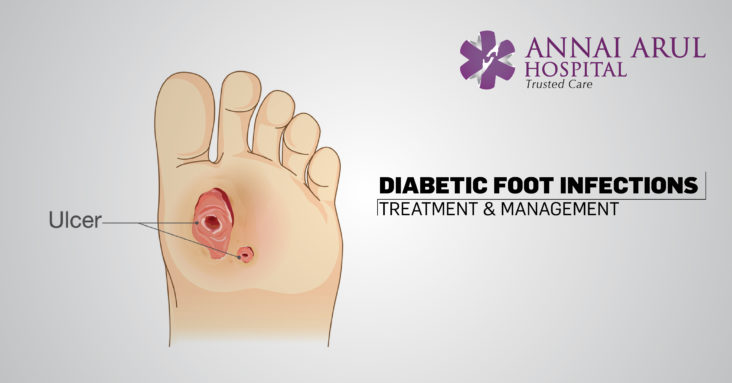There is a lifetime risk of foot ulcers in patients with diabetes type 1 and 2. Diabetic foot ulcers are the cause for debilitating morbidity and mortality. It accounts for a large percentage of non-traumatic amputations performed every year in hospitals around India. Infected foot ulcers due to diabetes also account for many hospital admissions. All this point to the importance of proper care and management of diabetic foot ulcers in a timely manner.
Risk factors for diabetic foot
There are several risk factors and indicators for diabetic foot. Uncontrolled sugar levels, overweight body and lack of proper treatment. The loss of protective sensation due to neuropathy, prior ulcers or amputations, foot deformity and excess pressure, external trauma, infections, chronic ischemia and peripheral artery diseases are some of the indications of diabetic risk. The risk of non-healing of wounds due to mechanical factors are also of great concern and a cause for diabetic foot ulcers.
What are the symptoms of foot ulcers?
The first signs of a foot ulcer is drainage from the foot which might stain the socks or the footwear. There may occur some swelling, irritation, redness and a nauseating odour from one or both feet and all these may indicate a foot ulcer. The most visible sign though may be the black tissue which surrounds the ulcer. The tissue turn black because there is no healthy blood flow to the area and results in partial or complete gangrene, which is tissue death due to infection. There may be odorous discharge, pain and numbness in the feet.
Sometimes there may be no sign of foot ulcers until the ulcer has been really infected. You should see a doctor if you see a discolouration in your feet or feel any pain around an area that is callused or irritates.
What are the type of ulcers?
The doctor will identify the ulcers and their seriousness based on a predermined scale of 0 – 3 as follows:
0 – No ulcer but foot will be at risk of getting one in the near future
1 – Ulcer is present but not infected yet
2 – The ulceration has begun and it is deep, exposing the joints and the tendons
3 – Serious ulcer with extensive infection and abscesses
Management and treatment of foot ulcers
Treatment of diabetic foot ulcers requires good management and control. It all begins with control of diabetes or sugar levels and management of other contributing factors like hypertension, hyperlipedemia and heart disease if any. Weight management also has a great impact on controlling the progress of the ulcer. Yet another aspect is the control of renal problems like renal insufficiency, arterial insufficiency, treatment of would infections and offloading of the ulcer followed by appropriate and continuous wound care.


